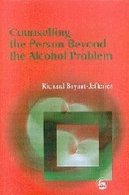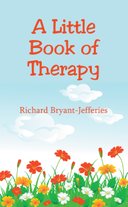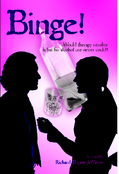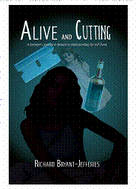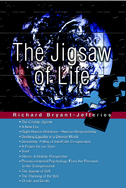Richard Bryant-Jefferies
Counselling, Psychotherapy and Coaching Author, Consultant in Equalities and Diversity, Counselling and Self-Awareness Trainer
My first book addressing counselling themes was entitled, Counselling the Person Beyond the Alcohol Problem (published by Jessica Kingsley Publishing). This arose out of the the training I was offering to Primary Health Care professionals on working with people with alcohol problems. I had decided I ought to write down what I was saying and exploring during the training sessions and it soon became a book. In particular I was interested in emhpasising seeing the person beyond the problem, drawing on person- or client-centred theory and practice.
One of the elements of the book that made a particular impression on me during the writing of this book was my use of fictitious dialogue in places to illustrate interactions within therapy sessions. It struck me that this was an effective way of communicating what happens in therapy for people either new to understanding therapeutic process, or how therapy can be effective when working with people who have particlar issues or problems.
My next title was Problem Drinking: A Person-Centred Dialogue, Published by Radcliffe Publishing). In this title I again drew on my extensive experience of working with people who have problems with alcohol but I centred it on fictitious dialogue between a client (Dave) and his counsellor (Alan). Also included are the supervision sessions between Alan and his supervisor (Jan). Throughout the text are comment boxes indicating how person-centred theory is being applied or explains what is taking place.
Problem Drinking became the first in a series of 17 books that I wrote and which were published by Radcliffe Publishing as the Living Therapy series. Each title focused on a particular problem area and used the same format to demonstrate person- or client- centred counselling in action, as well as providing information and insight into the nature of particular problems. At the time, whilst many were talking about the application of person-centred counselling to a range of problems areas and issues, what had not been written were texts showing how it could be applied in an effective and therapeutic manner with clients struggling with specific issues. 13 of these titles have been translated into Chinese and published byHigher Education Press in Beijing.
These titles are now published by Routledge Mental Health, part of Taylor and Francis publishers, and can be purchased from their site here.
Each book presented its own challenges, requiring research and becoming immersed in the characters. Many people have commented on the realism, which I am grateful for, as I really did want to bring the reader into the therapy room. I always ended the books wondering what was going to happen next for the main characters and in a strange way wishing I could have accompanied them a little further on their journey. It is difficult to pick out any one book from the series, but I do have to say that Counselling Victims of Warfare was the one that I avoided writing as I knew it was not going to be an enjoyable book to write. However, it had to be written as it is such a significant theme.
I have also included a page providing an index of themes that are addressed within the series.
I also wrote another book during this period for Radcliffe Publishing (also now available from Routledge) entitled Models of Care for Drug Service Provision. This book drew on developments in the way drug services were being structured in the UK and explained how this would operate in practice, again giving examples of its application through scenarios and dialogue.
Whilst writing the above titles I was aware that I wantd to write a smaller book giving empathic support for people who, for whatever reason, were struggling with issues in their lives. I put together a number of desperate statements that reflected the experiences that people can have during difficult phases of their lives and complemented these with empathic affirmations. The result was A Little Book of Therapy (now published by New Generation Publishing).
Having written the Living Therapy series I began to wonder whether my skills in writing dialogue could be applied to writing novels. For the first of these I went back to a topic that was familiar - problem drinking. Binge! is the story of a man (Andy) who, as a child along with his brother (Terry), was traumatised by the witnessing of a murder. The story takes the reader on a journey with Andy as he struggles with his binge-drinking and his relationship with his partner (Julie) and his brother. Throughout the story, Andy is attending counselling sessions with his therapist (Graham) who in turn reflects on what is happening with his supervisor (Stuart). It is a story that encompasses stress, trauma and suicide.
My next novel took me to a new area although one that Ihad encountered many times as a counsellor. Alive and Cutting portrays a teenager's journey in therapy to understand her self-harm. Katie experienced neglect in early childhood, being taken into care, being fostered, and then bullied at school. She refers herself to a youth counsellor, Keith, who works with her to make sense of why she cuts herself and how she can manage this. This is a book about finding other ways of cutting yourself free from traumatic experiences.
Around the same time I also published The Jigsaw of Life. This is a collection of essays I have written over the years on a range of themes encompassing spirituality, diversity, personal growth. The intention is to take the reader on a journey from cosmic creation through the threat of competitive separateness to human responsibility, identifying key qualities - pieces of the jigsaw of life - that I think need to be set in place in the world to enable the purpose of creation to be fulfilled and revealed. Sounds a bit grandiose, I admit, but it is full of perspectives and references to encourage reflection. There are many references to the person-centred approach (PCA) with two chapters devoted to transpersonal perspectives on PCA. As one of the Foreword writers comments: 'through a series of gentle reflections from a wide variety of perspectives the reader is drawn to consider what it means to be a human being'.
The only other book that I have written was co-authored with Lynn Frances, The Sevenfold Circle: Self-awareness in Dance. Published by Findhorn Press this is sadly out of print and can only be obtained from myself. It explores the use of sacred circle dance in promoting greater self-awareness and self-understanding.
The links on the menu will take you to pages providing more information about all of the books that I have written.
I have also had chapters published in a number of books edited by other professionals:
- Bryant-Jefferies, R (2000) An Exploration on the themes of Congruence, Incongruence and Alcohol Use. In The Person-Centered Approach: Applications for Living, edited by Doug Bower. Writers Club Press, New York
- Bryant-Jefferies, R (2002) Rehabilitating the Problem Drinker in the Community. In Rehabilitation Counselling in Physical and Mental Health, edited by Kim Etherington. Jessica Kingsley Publishers: London.
- Bryant-Jefferies, R (2005) Primary Care Nursing and Alcohol – A New Way Forward? In Nursing and Substance Misuse in Primary Care: The Multidisciplinary Approach, edited by Rosie Winyard. Radcliffe Publishing, Abingdon.
- Bryant-Jefferies, R (f 2006) A Person Centred Approach to Understanding and Helping People with a Dual Diagnosis. Published in Dual Diagnosis Nursing, edited by Professor G.Hussein Rassool, Blackwell Publishing, Oxford
- Bryant-Jefferies, R (2007) Counselling the man beyond the weight problem. Published in Hazardous Waist, edited by Professor Alan White and Maggie Pettifer, Radcliffe Publishing, Abingdon.
- Joseph, S and Bryant-Jefferies, R (2007) Person-Centred Coaching Psychology. Published in Handbook of Coaching Psychology, edited by Professor Stephen Palmer. Routledge, Hove, East Sussex
- Bryant-Jefferies, R (2012) Panic and Anxiety: Person Centred Interpretations and Responses. In Client Issues in Counselling and Psychotherapy: Person-Cented Practice. Edited by Paul Wilkins and Janet Tolan. Sage, London
- Joseph, S and Bryant-Jefferies, R (2019) Person-centred coaching psychology. Published in Handbook of Coaching Psychology (2nd Edition), edited by Stephen Palmer and Alison Whybrow. Routledge, Abingdon
- Bryant-Jefferies, R (2021). Person-centred Coaching. Published in The Coaches' Handbook: The Complete Practitioner Guide for Professional Coaches, edited by Jonathan Passmore.
Twitter:
@richardbj
I don't use this any more. Intended meaning gets lost in soundbites.
Books published
Counselling the Person Beyond the Alcohol Problem
Living Therapy series
- Problem Drinking
- Couselling for Problem Gambling
- Counselling for Eating Disorders in Women
- Counselling for Eating Disorders in Men
- Counselling Young People
- Relationship Counselling: Sons and their Mothers
- Responding to a Serious Mental Health Problem
- Counselling for Progressive Disability
- Counselling a Recovering Drug User
- Counselling a Survivor of Childood Sexual Abuse
- Counselling Victions of Warfare
- Counselling for Obesity
- Counselling Young Binge Drinkers
- Counselling for Death and Dying
- Time-limited Therapy in Primary Care
- Workplace Counselling in the NHS
- Person-centred Counselling Supervision
Models of Care for Drug Service Provision
A Little Book of Therapy
Novels
Binge!
Alive and Cutting
The Jigsaw of Life
The Sevenfold Circle: Self Awareness in Dance (with Lynn Frances)

















